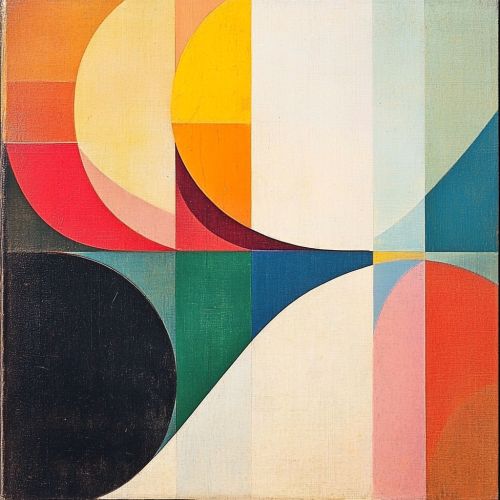Rudolf Arnheim
Early Life and Education
Rudolf Arnheim was born on July 15, 1904, in Berlin, Germany. He was the son of Georg Arnheim, a piano manufacturer, and Betty Guttmann Arnheim. Arnheim's early education took place in Berlin, where he attended the prestigious Französisches Gymnasium. His interest in the arts and sciences was evident from a young age, leading him to pursue higher education at the University of Berlin. There, he studied psychology, philosophy, art history, and musicology, earning his doctorate in 1928 under the supervision of the renowned psychologist Max Wertheimer, one of the founders of Gestalt psychology.
Academic Career
Early Research
Arnheim's early research was deeply influenced by Gestalt psychology, which emphasizes the human ability to perceive patterns and wholes rather than just a collection of parts. His doctoral dissertation, "Experimentell-psychologische Untersuchungen zum Ausdrucksproblem" (Experimental-Psychological Investigations on the Problem of Expression), explored the psychological underpinnings of artistic expression. This work laid the foundation for his lifelong exploration of the intersection between psychology and the arts.
Emigration and Career in the United States
With the rise of the Nazi regime in Germany, Arnheim, who was of Jewish descent, emigrated to Italy in 1933. He continued his research and teaching in Rome until 1939, when he moved to the United States to escape the impending war. In the U.S., Arnheim held various academic positions, including at Sarah Lawrence College, Harvard University, and the University of Michigan. His work during this period was characterized by a deepening exploration of visual perception and its implications for art and media.
Major Works and Contributions
Art and Visual Perception
Arnheim's most influential work, "Art and Visual Perception: A Psychology of the Creative Eye," was published in 1954. This seminal text applied principles of Gestalt psychology to the analysis of visual art, arguing that perceptual processes are fundamental to understanding artistic creation and appreciation. The book was groundbreaking in its interdisciplinary approach, bridging the gap between psychology and art criticism.


Film as Art
In "Film as Art" (1957), Arnheim extended his analysis to the medium of film. He argued that film, like traditional visual arts, relies on perceptual principles to convey meaning and evoke emotional responses. Arnheim's insights into the aesthetic and psychological dimensions of film have had a lasting impact on both film theory and practice.
Visual Thinking
Arnheim's 1969 book, "Visual Thinking," further developed his ideas on the cognitive processes involved in visual perception. He posited that visual thinking is a fundamental aspect of human cognition, integral to problem-solving and creativity. This work challenged the then-dominant view that verbal and mathematical reasoning were the primary modes of thought, highlighting the importance of visual-spatial intelligence.
Theoretical Perspectives
Gestalt Psychology
Arnheim's work is deeply rooted in Gestalt psychology, which posits that humans naturally perceive objects as organized patterns and wholes. This perspective contrasts with the atomistic view that perception is merely the sum of sensory inputs. Arnheim applied Gestalt principles to various domains, including art, film, and architecture, demonstrating how perceptual organization influences aesthetic experience.
Symbolism and Abstraction
Arnheim also explored the roles of symbolism and abstraction in art. He argued that abstract art, far from being a departure from reality, taps into fundamental perceptual and cognitive processes. In his view, abstract forms can convey complex ideas and emotions by engaging the viewer's perceptual and interpretive faculties.
Influence and Legacy
Interdisciplinary Impact
Arnheim's work has had a profound influence across multiple disciplines, including psychology, art history, film studies, and architecture. His interdisciplinary approach has inspired scholars and practitioners to consider the psychological dimensions of artistic creation and appreciation.
Educational Contributions
Arnheim was also a dedicated educator, known for his engaging lectures and commitment to fostering critical thinking. His teaching philosophy emphasized the importance of integrating perceptual and cognitive insights into the study of the arts, encouraging students to develop a holistic understanding of artistic processes.
Personal Life
Rudolf Arnheim married Mary Nimmo in 1940, and they had one daughter, Andrea. Despite his rigorous academic schedule, Arnheim was known for his warmth and generosity, often mentoring young scholars and artists. He remained active in his field well into his later years, continuing to write and lecture until his death on June 9, 2007, in Ann Arbor, Michigan.
See Also
References
- Arnheim, Rudolf. "Art and Visual Perception: A Psychology of the Creative Eye." University of California Press, 1954.
- Arnheim, Rudolf. "Film as Art." University of California Press, 1957.
- Arnheim, Rudolf. "Visual Thinking." University of California Press, 1969.
